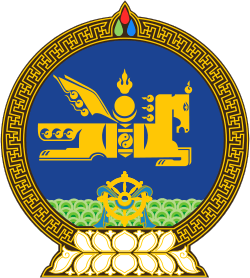Women in Mongolia
 Mongolian women | |
| Gender Inequality Index | |
|---|---|
| Value | 0.328 (2012) |
| Rank | 44th |
| Maternal mortality (per 100,000) | 63 (2010) |
| Women in parliament | 12.7% (2012) |
| Females over 25 with secondary education | 83.0% (2010) |
| Women in labour force | 54.3% (2011) |
| Global Gender Gap Index[1] | |
| Value | 0.7204 (2013) |
| Rank | 33rd out of 144 |
Mongolian women had a higher social status than women in many other Asian societies, but were considered unable to herd cattle and possibly not horses. Only one woman, Toregene, became supreme ruler in between maturity of the elected chosen Khan following Genghis Khan's introduction of heredity possibly claimed by the Tatars he was last with, and four Khatuns shared governorship and regional powers with Khublai Khan.
Many were herdswomen and mothers. However, during the Middle Ages, some were women horse-archers and swordswomen, and Hun descendant sawkele impassioned women fighters were accepted but the Yassa while not prohibiting recommends them to commerce probably of their dairy produce or means them to kill rather than fight or as members of the Khuriltai, a Mongol governmental council.
Genghis Khan's daughters were made army combat generals by him, including Altanqalan who made her husband separate from all his female friends respectively divorce all his wives. Some women were Mongol city commanders and khatuns and bekis in war for the rank of command in battle this gave, but khatuns were married to prolong the race.
References
![]() This article incorporates public domain material from the Library of Congress Country Studies website http://lcweb2.loc.gov/frd/cs/. (Data as of June 1989.)
This article incorporates public domain material from the Library of Congress Country Studies website http://lcweb2.loc.gov/frd/cs/. (Data as of June 1989.)
- ↑ "The Global Gender Gap Report" (PDF). World Economic Forum. 2013. pp. 12–13.
Further reading
- Avery, Martha (1996). Women of Mongolia. Seattle: University of Washington Press. ISBN 9780937321058. Retrieved 5 July 2015.
- Guek-Cheng Pang (2009). Mongolia. Singapore: Marshall Cavendish. ISBN 9780761448495. Retrieved 5 July 2015.
- Veit, Veronika (2007). The Role of Women in the Altaic World: Permanent International Altaistic Conference, 44th Meeting, Walberberg, 26-31 August 2001. Wiesbaden: Harrassowitz Verlag. ISBN 9783447055376. Retrieved 5 July 2015.
External links
| Wikimedia Commons has media related to Women of Mongolia. |
- Rossabi, Morris. "Women in Modern Mongolia". asiasociety.org. Manhattan: Asia Society. Retrieved 5 July 2015.
- Munkhbat, Naran; Paras, Robbie; Theunissen, Tirza (14 May 2014). "Advancing Women Business Leadership in Mongolia". asiafoundation.org. The Asia Foundation. Retrieved 5 July 2015.

